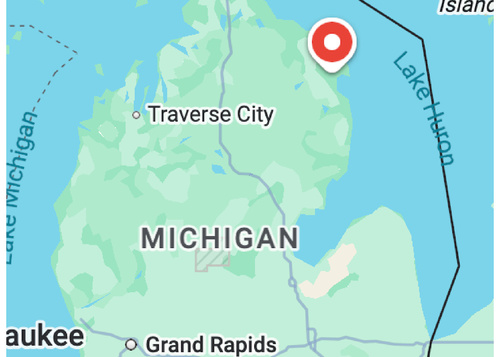The author is a former Detroit News reporter who wrote about highways and transportation and developed expertise about bridges in Michigan. The Zilwaukee Bridge spans the Saginaw River in Saginaw County. This column first appeared on Facebook and is being published with permission.
By Lou Mleczko
I have been reading many ignorant comments about the troubled twin Zilwaukee Bridges, which will be closed in stages this year as MDOT spends $2.9 million on "preventive maintenance."

I was the Detroit News reporter who first broke the story of the near-collapse of the northbound bridge on Aug. 28, 1982. I also worked on the subsequent investigations and the changes in MDOT contractors that led to the project’s completion six years later.
The facts
The near-collapse of the northbound section, near the south side of the Saginaw River, occurred on the morning of Aug. 28, 1982, as construction crews attempted to hoist a 157-ton precast concrete segment into position.
This work was being done on a Saturday morning because the contractor was already 10 weeks behind schedule for the November 1983 completion date.
For some reason, the crews made a crucial error in balancing the bridge deck while a 1,100-ton gantry hoisted the 157-ton segment for installation. This imbalance caused one side of the partially completed deck to sag five feet, while the opposite side rose three feet.
The entire section of the deck at Pier 11 would have collapsed to the ground, but the rising three-foot section slammed into an expansion joint of an adjacent bridge deck section. This teeter-totter movement severely crushed the expansion joint, and the vertical concrete pier (Pier 11) was pushed sideways, causing its footings to crack in half.
Some history
The two Zilwaukee Bridges are composed of 1,656 precast, post-tensioned segments, held together by prestressed steel tendons inside the hollow segments. (Yes, the bridge superstructure is hollow.) Each segment is also secured with epoxy glue. The steel tendons were installed in interior conduits, which were then filled with grout to protect them from rust.
The original contract for the twin bridges was $76.8 million. The precast segmental bridges, then the largest in the world, were designed by a Dutch firm, BVN-STS, because MDOT engineers were unfamiliar with this design. The construction contract was awarded to another Dutch company, Stevin Construction, which was responsible for making the precast segments on-site. Walter Toebe Co. of Wixom, MI, held the contract to construct the foundation footings and vertical support piers.
The accident resulted in a six-year delay in completing the two bridges as lawsuits and public investigations ensued. A new contractor was eventually hired to finish the project, and MDOT brought in Howard Needles, Tammen & Bergendoff as consulting engineers.
Final cost: $124 million.
Since then, the bridges have undergone numerous repairs over the years in an effort to hold the segments together.








